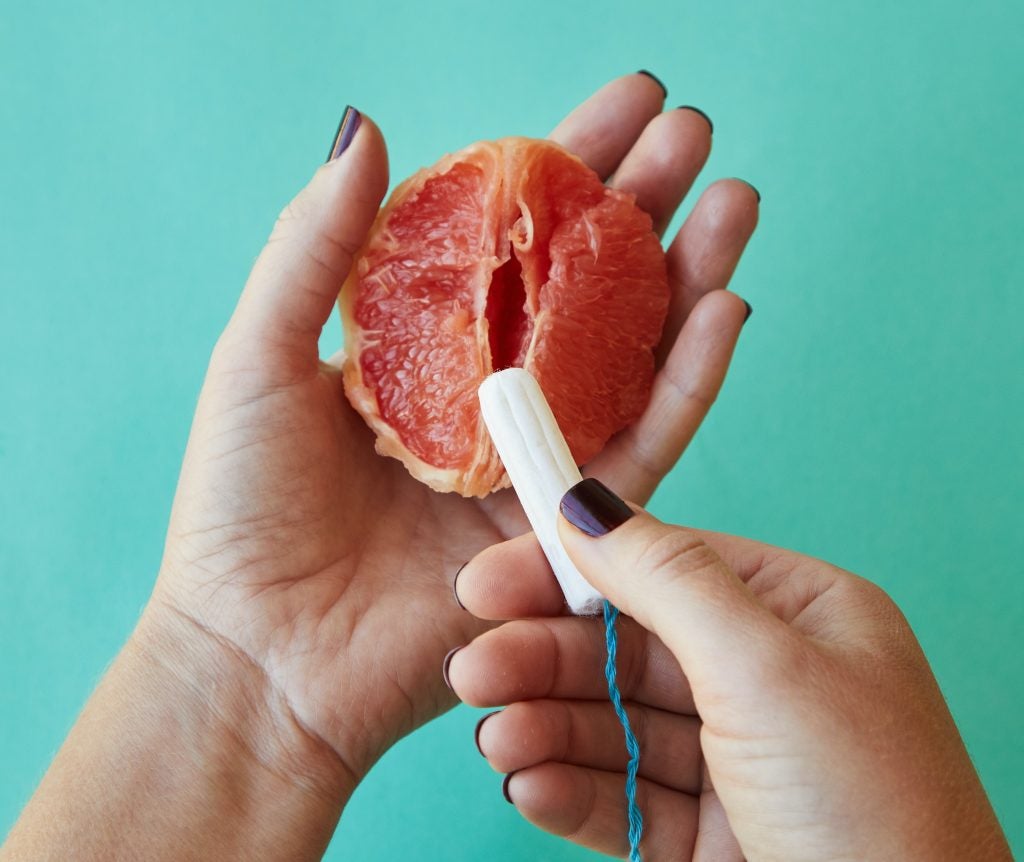Most females are born with a hymen, a thin piece of skin that partially covers the vaginal opening (or introitus). The main purpose of the hymen is to protect the vaginal opening and the areas immediately surrounding the introitus during a female’s early developing years. Despite its biological function, many cultures place a significant amount of importance on the hymen and whether or not it is intact. This small and seemingly insignificant piece of tissue is of such great importance to many cultures because an intact hymen is believed to indicate the chastity of a female. The presence of the hymen implies that the female is a virgin (one who has never engaged in sexual intercourse). The importance of a female’s chastity is often emphasized in patriarchal societies and by traditional religions. Some may argue that a chaste bride may place a higher value on fidelity, more firmly guaranteeing that her offspring will be her husband’s children and not someone else’s. Men are also encouraged to seek virgins as wives because they are deemed “pure” and not sexually promiscuous. These ideas continue to reinforce the wrongful notion that females are only worthy and respectable if they are virgins. It places virginity on a pedestal and shames females who are not virgins. Additionally, it places more shame on females who may be sexually active and find pleasure in sexual activities.
The Hymen and Virginity

One problem with the theory described above, however, is that if a female does not have an intact hymen, it is possible that she is still a virgin. A female may not have a hymen for a variety of different reasons. Many females tear their hymen through nonsexual activities that put tension on the hymenal tissue. These activities include, but are not limited to, engaging in sports, horseback riding, and inserting tampons. Women may not even be aware that their hymen has torn, since there may be little to no blood or pain. Sexual intercourse is only one of many reasons why a female may not have a hymen. Likewise, a non-virginal female may still have an intact hymen. The hymen can stretch sufficiently to permit entry of tampons and sometimes even a penis. There is also a variety of structure in regards to the hymen that varies from female to female. A hymen can have one to several openings, or no opening at all.
In societies that emphasize the importance of a hymen, a female without a hymen may be at risk on her wedding night. In many cultures that put an emphasis on virginity, the husband may expect to “pop” his wife’s “cherry.” Blood-stained sheets are often put on display to mark the loss of virginity and prove the bride’s purity. A female who does not bleed on her wedding night may be judged to be a non-virgin. She risks being shunned by her family and new husband. She may even be returned to her family as “used goods,” stoned to death, or banished from her society. Again, virginal females may not have an intact hymen or experience bleeding upon intercourse.
The hymen carries a great deal of importance and symbolism even in the United States. There have been instances in the United States, especially among college students, of people being eager to lose their virginity as soon as possible. In this case, retaining one’s virginity is seen as a stigma of inexperience. However, in many places in the U.S., losing one’s virginity still carries a stigma for young females. Perhaps because of the stigma associated with this act, men and boys alike are sometimes eager to be the ones who “take” a girl’s virginity. However, other than tearing or stretching her hymen, there is no other biological change that a female goes through after her first intercourse. The thought that a female loses value by losing her virginity is an outdated and degrading concept. “Losing one’s virginity” also means a myriad of different things to different people. Engaging in penile and vaginal sex for the first time is not the only way that one may define “losing one’s virginity.” We can only hope that as more and more people begin to understand the basics of human sexuality, these false myths will be eradicated.
Another problem with connecting the presence of an intact hymen and lack of penile-vaginal penetration to virginity, is that it often excludes the lesbian, gay, bisexual and transgendered (LGBT) community. Members of the LGBT community consider sex with the same partner as a relinquishing of virginity, and may feel discredited or discounted by the heteronormative view that pervades discussions of virginity. As mentioned before, this heteronormative idea of losing one’s virginity through penile and vaginal sex is incomprehensive and excluding, as not everyone engages in this particular type of sex. Additionally, there has been a rise in alternative sexual activity among teenagers who have taken chastity pledges. This alternative sexual activity includes practices like oral sex and anal sex, which they often do not think of as sexual intercourse. Because virginity is a complex and culturally constructed concept, we recommend that you define it for yourself. Whether or not you have torn or stretched your hymen, it is up to you and no one else to decide whether you are a virgin.
Reconstructive Hymen Surgery

In many religious communities, there has been an influx of hymen reparation surgery, also known as hymenoplasty. This procedure is popular in the Middle East, where virginity is often expected of a bride.1For this reason, females who no longer have an intact hymen have their hymens surgically reconstructed in order to appear virginal on their wedding night. The surgery sutures the torn hymen to create a fake “new” hymen at the vaginal opening.1In addition to the surgery, some females have a gelatin capsule with red dye inserted within their vaginal canal to make it appear that bleeding occurred after penetration.1Overall, females should not feel the need to reconstruct a fake hymen for reasons other than that they would like to do it for themselves—not anyone else. The hymen’s connection to virginity and purity is antiquated and reinforces toxic ideas about females who should be able to claim their own sexual autonomy.
Concluding Remarks

The hymen has been historically significant in a myriad of cultures. It has been viewed as a symbol of purity and virginity, although these particular ideas are outdated and incomprehensive. An intact hymen should not dictate a female’s worth or value in society. Additionally, an intact or torn hymen should not affect how females are viewed by men and society as a whole. The main biological purpose of the hymen is to protect the vaginal opening and the areas surrounding the introitus. A female may not have a hymen due to nonsexual activities that put tension on the hymenal tissue. These activities could range from a variety of sports to inserting tampons. All in all, females should not place value on themselves depending on whether they have an intact or torn hymen. Virginity is a complicated and culturally constructed concept that should not dictate anyone’s sexual and bodily autonomy.
References
- Afary, Janet. “Recreating Virginity in Iran.” The Guardian, Guardian News and Media, 12 May 2009.
Last Updated: 14 November 2018.
